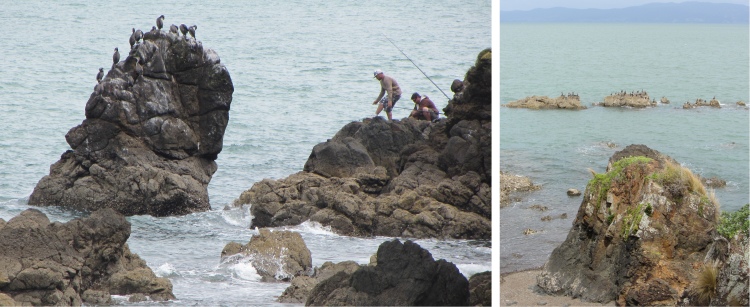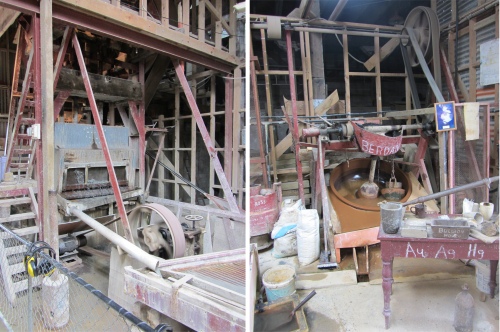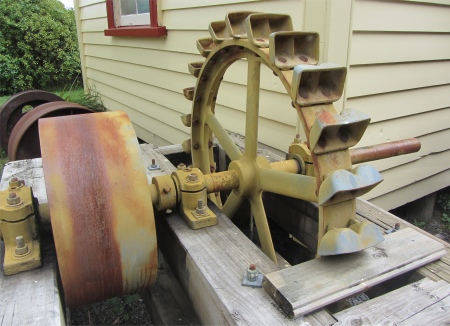 Shags Taking Over the Rocks by the Firth of Thames |
The couple were interested to find out where I had visited in my three months, and I had the dreaded expected question, "What was the best place you visited?" "All the places I visited had their own unique "sweet spot" in my mind, though perhaps Invercargill was a little disappointing," is the best answer I offer.
 Stamper Battery in Operation |
Richard's theory on why all Kiwis have time for each other was along the lines New Zealand was a brand new country 150 years ago, and the class barriers that are encountered in Europe didn't exist or develop. In his capacity as a rep in the meat packaging industry, he had travelled widely, including within the UK. He became very aware of a class structure in a Liverpool company when he spent some time there.
"You can tell Britain was covered in glaciers during the ice ages, it is all gently rounded, unlike the vast mountain ranges you get here," he said. "That's not strictly true. We had mountainous areas in Britain, the heights of which poked through the ice, and hence were not rounded. If you had visited the Pennines, Scottish Highlands, Snowdonia or the Lake District, you would have received a different perspective," I asserted.
 Peleton Wheel |
The road down to Thames snaked along the grey, rocky shoreline of the "Pohutukawa Coast", passing a multitude of tiny, pretty, sandy bays and rocky beaches, with the occasional clutch of houses or campsite. Sea birds abounded everywhere, and isolated rocks in the sea were often magnets for shags. If I had been travelling along this route a couple of months earlier it would have been crimson when the pohutukawa blooms; often referred to as the New Zealand Christmas tree.
 Thames Sense of Humour |
Thames was initially built during a gold rush. William Hunt made the first major discovery of gold on August 10th, 1867, in the Kuranui Stream at the north end of Thames. The subsequent mine produced more than 102 thousand ounces bullion and was known as the Shotover. The era from 1868 to 1871 were the bonanza years for the town with gold production topping one million pounds sterling at its peak. Official figures for production of the Thames Mines recorded a yield of 2.3 million ounces bullion with the value at $845 million. The three richest fields were the Manukau, Golden Crown and Caledonian mines but many others yielded near equivalent amounts. Towards the end of the last century Thames was the largest centre of population in New Zealand, with 18,000 inhabitants and well over 100 hotels and three theatres. For a while it was thought it would replace Auckland as the major town in the area.
Grahamstown, situated at the northern end of the township of Thames, was established in 1868 when James Mackay, the Land Commissioner, sanctioned the leasing of a large block of the northern end of Thames flat to Mr Robert Graham as a township. It was connected to the Southern township of Shortland by Pollen Street, named after Dr Daniel Pollen, deputy superintendent of the Auckland Provincial Council.


